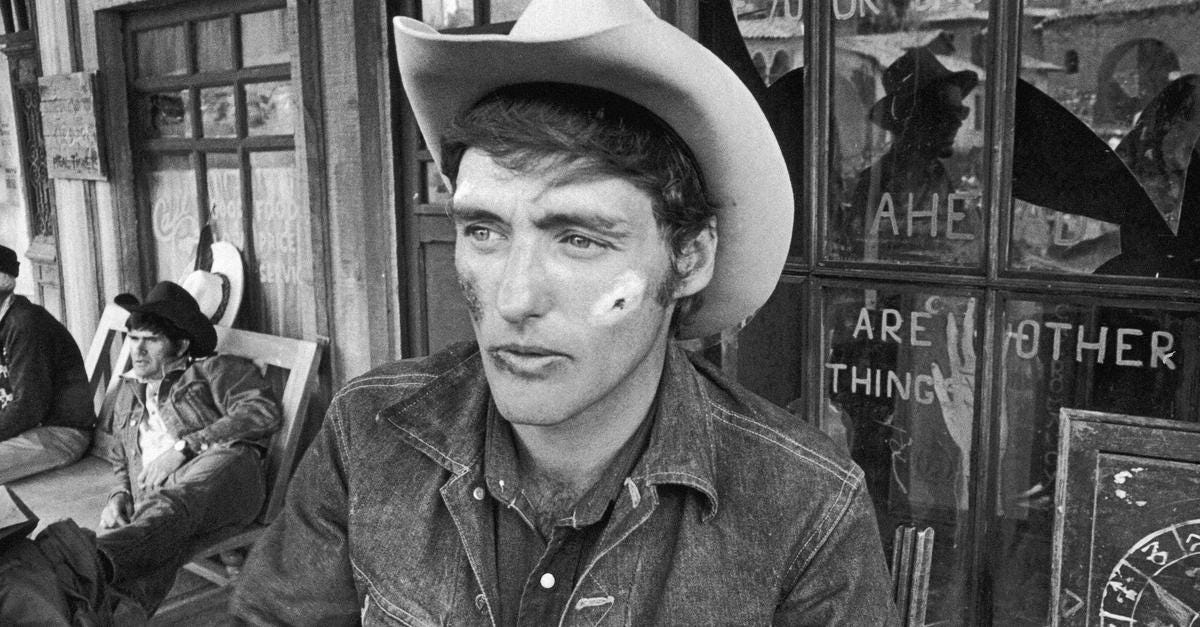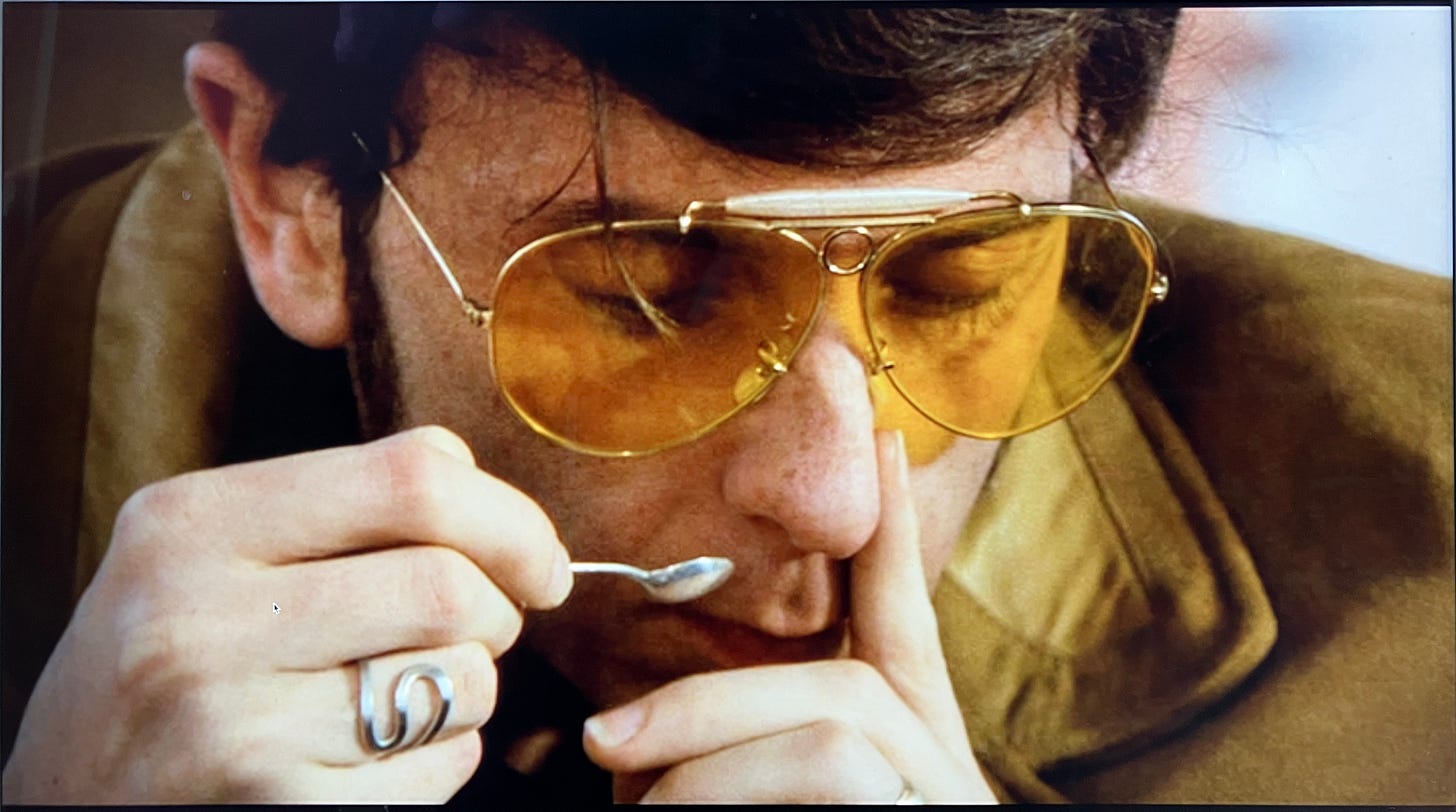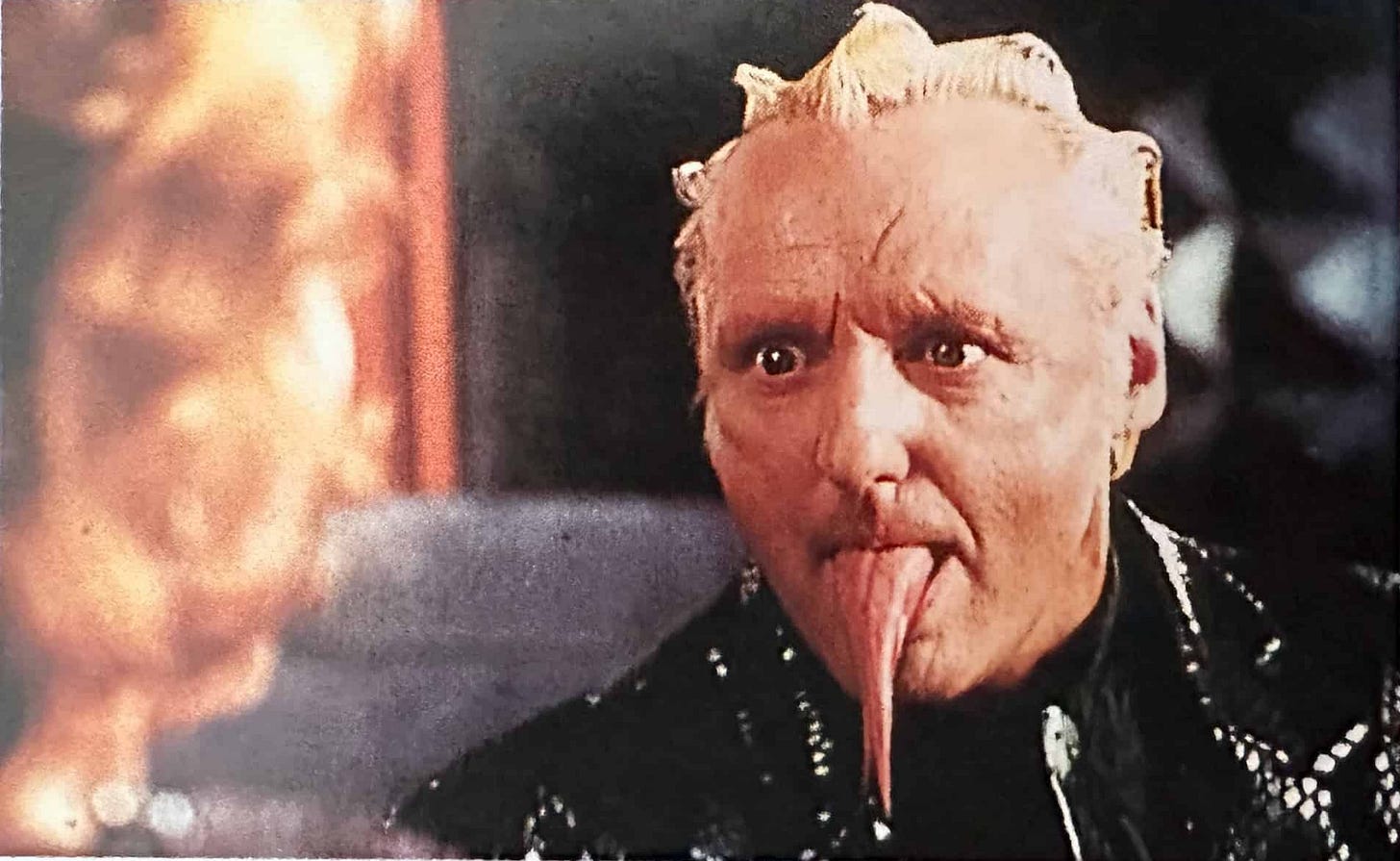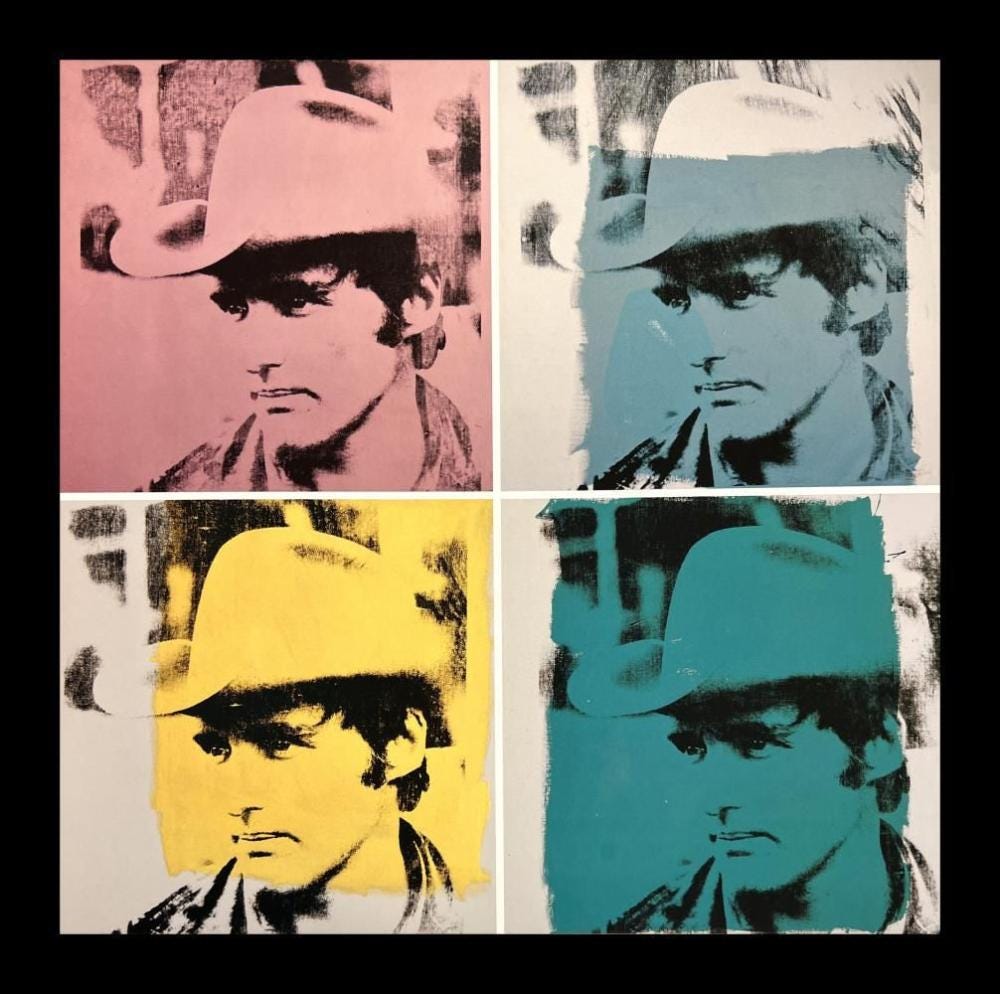Dennis Hopper and... the Medellín Cartel?
The wild man actor's misadventures in the cocaine trade
“The cocaine problem in the United States is really because of me,” said the famously hedonistic actor and director Dennis Hopper.
Is that so, Dennis? We’ll take this with a shot of tequila and a grain of salt here at Senators Don’t Kill, which if you’re just joining us, is a veritable showcase of nefarious characters from the international drug trade. Let’s permit Hopper to indulge in his moment of self-grandiosity as he looks back on a storied career fueled by pharmacological excess.
“There was no cocaine before Easy Rider on the street,” he went on to say. “After Easy Rider it was everywhere.”
We’re warming up to his claim. People forget Hopper not only starred in the 1969 counterculture classic film, but directed it. The druggie moments that shine are Jack Nicholson smoking dope before a campfire and the trippy LSD sequence at St Louis Cemetery No. 1 in New Orleans. Right before Hopper and his chopper-riding buddy Peter Fonda hit the road for the Big Easy to the sounds of Steppenwolf’s “Born to be Wild,” they approach a Rolls Royce outside LAX Airport. Inside the car, they commence a drug deal with Phil Spector who takes a toot of their coke before handing over the cash that Billy and Captain America, as our anti-heroes are called, prepare to blow at Mardi Gras.
Did Hopper’s film about the aftermath of said drug deal make cocaine hip in America?Easy Rider certainly made Paramount Studios a packet of money and gave Hopper carte blanche and final cut on his next project.
Building a Wild West town atop a mountain in Peru, Hopper commenced The Last Movie, a so-called “anti-western” that, if it’s remembered at all, is because of how bonkers the shoot was. Life magazine sent a reporter who gleefully covered the drug-crazed “whipping parties” and a strange instance about a woman chained to a porch like Joan of Arc with a fire crackling at her feet. One of the juicier tidbits from the article was about how the actors - who included noted wild men Kris Kristofferson and Dean Stockwell - took advantage of the native coca plant, cocaine being a tenth of the cost in Hollywood.
I spoke to some of the cast and crew when writing my biography on Hopper, and while they freely admitted to the insanity of the shoot, a regular refrain kept popping up. “How much of that cocaine was being shipped back to Hollywood in sealed film canisters?”
If true, at least Hopper would’ve made some profit off The Last Movie. The massive 1971 flop - perhaps worse than “Megaflopolis” by Coppola who directed an off-the-rails Hopper in Apocalypse Now - led to a dark decade for the actor. He spent the latter part living in Mexico City trying to mount a production of mysterious author B. Traven’s book Death Ship. Instead he found himself in increasingly strange scenes, including throwing knives at a door inside a hotel room, leading the woman trapped inside to scream for the police who showed up and nearly threw Hopper in a Mexican jail.
“I was doing half an ounce of cocaine every few days,” recalled Hopper. “I was drinking like a half gallon of rum, then a couple bags of coke to sober up. And that wasn’t getting high, that was just to keep going, man.”
Hitting rock bottom after wandering through the jungle outside Cuernavaca and masturbating on a tree, Hopper checked into rehab and emerged for his hot streak that began with Blue Velvet and Hoosiers, and continued on with Speed, True Romance, and, well, Waterworld and Super Mario Bros. playing King Koopa.
A true Hollywood comeback story, making Hopper an irresistible subject for a book. I commenced interviews shortly after his death in 2010. Doing so, I had lunch with someone - whose name I won’t mention for reasons to be revealed - who told me something about Dennis and the Medellín Cartel. Obviously, I thought, this person was referring to Hopper’s starring role in 1991’s Doublecrossed playing Barry Seal, the pilot adventurer who smuggled cocaine for Pablo Escobar and ended up ratting out the Colombian drug lord to the DEA (a role reprised by Tom Cruise in 2007’s American Made.)
No, that wasn’t it.
“If you ever mention my name as a source, I’ll deny it,” this person said, “but Dennis worked for the Medellín Cartel.”
I will say this. The person was very close to Dennis. Not wanting to end up like Barry Seal who got gunned down by Medellín contract killers, I wasn’t about to go down to Bogotá and explore the lead, which is why I never mentioned it in the book. It did shed new light on what Hopper might’ve been up to in Mexico City. Escobar used Mexico as a transit point for his cocaine, and kept a lavish hideout in Tulum that’s now a boutique hotel.
I’ll close on a diary entry from March 8, 1979 by Hopper’s longtime friend Andy Warhol (prolific art collector Hopper having bought the first Warhol Campbell’s Soup Can before everyone else caught on).
Dennis is wanting me to go to Mexico to meet some friends of his. And Dennis and his group always did know all the rich people, but they’re so sixties and they’re crazy.
It’s a persistent rumor in the art world that Pablo Escobar had a fabulous collection on his walls including works by Dalí and Picasso, paintings providing a tried and true means to launder narcodollars. Had Andy accepted Hopper’s invite, perhaps Escobar would’ve had a few Warhols in the mix.










Sounds about right. Funny thing is I remember partying with him and the next day seeing him on Lettermen saying he was clean. California clean I guess. Wonderful guy and def a Hollywood legend!